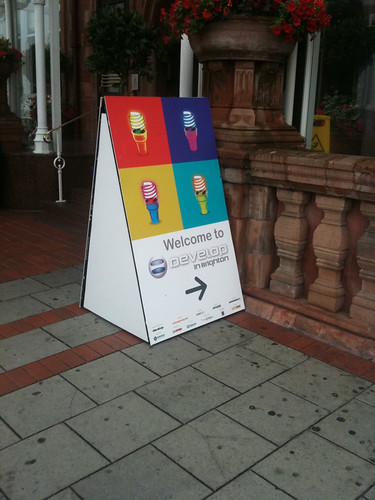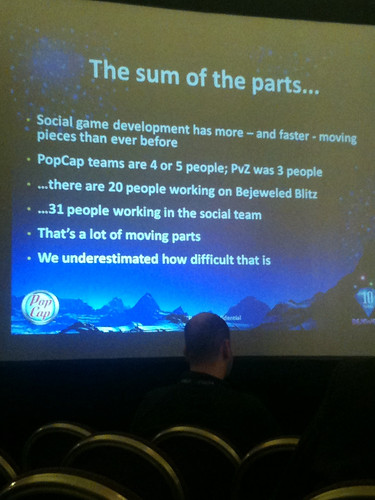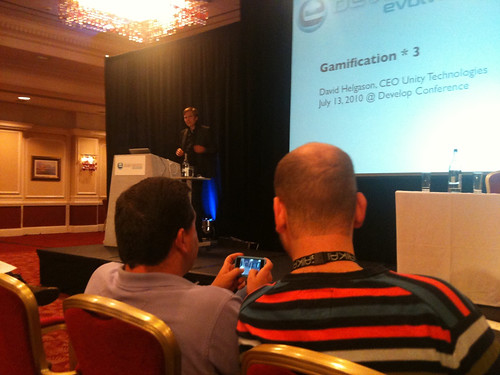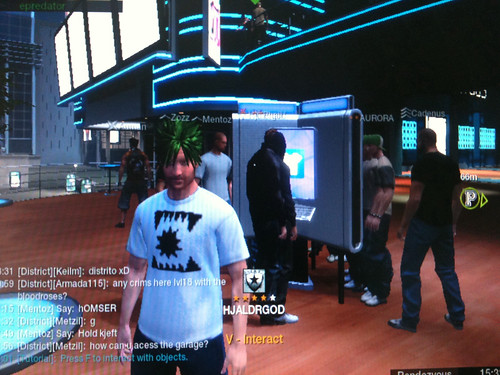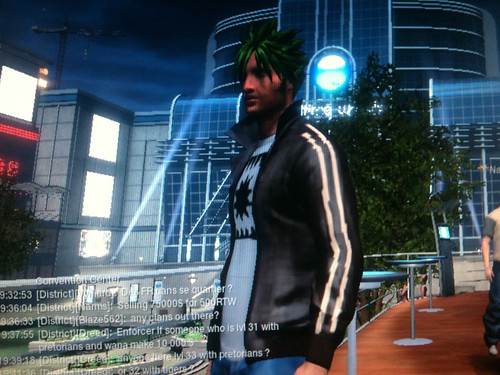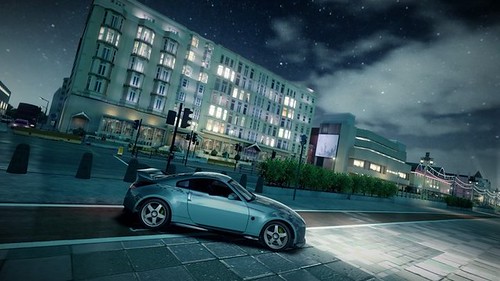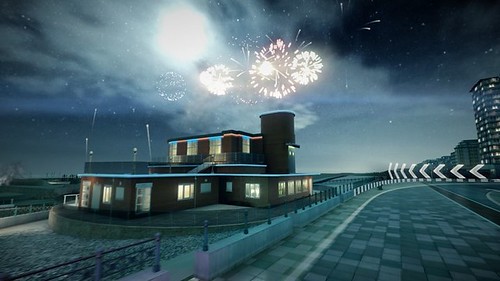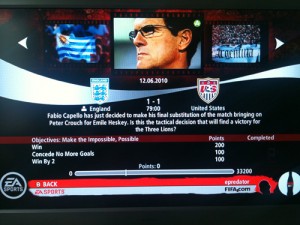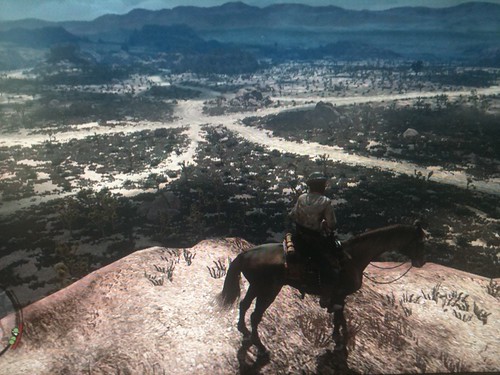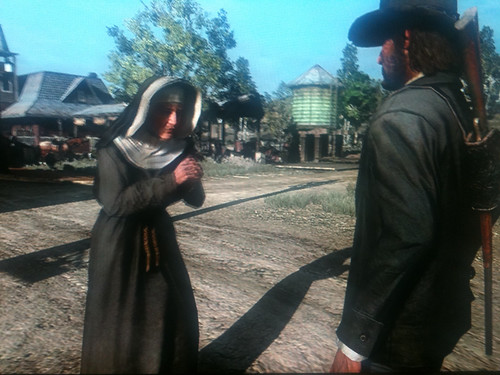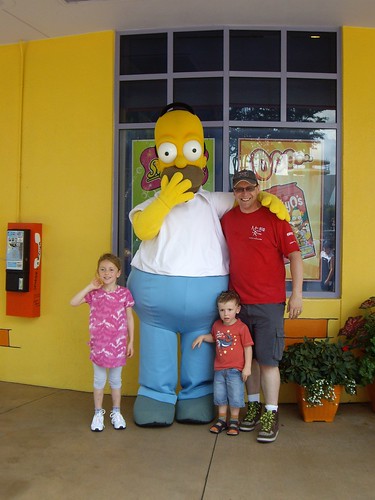There have been some great things at Develop 2010 this past day, but I felt so enthused and invigorated by the presentation by Ricky Haggett and Nat Marco from HoneySlug I had to do a separate post on it. The pitch was called Homespun Fun – The Art of Kahoots. It was (as from the title) aimed at the game artist audience, but quite frankly it was such an amazing tale that it should have been a keynote!
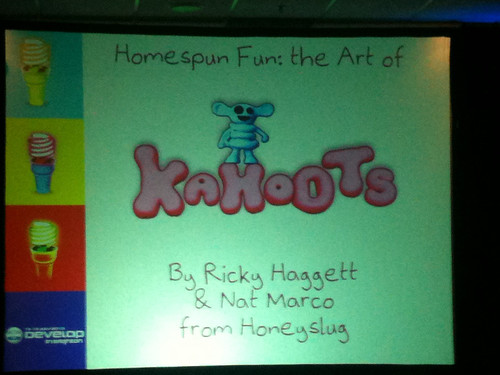
Firstly we have seen a lot of powerpoint at this conference. An awful lot of standard bullet points, though the stories have been interesting. Straight away Ricky and Nat were going to deliver this in a more friendly and accommodating manner, in fact it was like we had just popped into their offices and we were all having a friendly chat (Ricky and I were presenting sessions the awakening creative entrepreneurship last year in Derry so I know this style is very natural for him). Honeyslug is a small 3 person games development company based out of London. The game they were talking about is one that is currently on PSN and is called Kahoots.
The story really is one of just getting on and doing something, creating and discovering ideas on the way. No great plan, no huge budget, in fact no real budget at all. Even more important there was clearly a great deal of enjoyment and fulfilment in the entire project for the close knit team.
Nat did some “preliminary” character sketches in biro on lined paper, as Ricky then said “there were actually no more sketches, that was it design done”
It started as a quick flash demo using some pixel art that Ricky “threw together” in a weekend. The game is a 2d puzzle based trigger the right things at the right time game. The idea for the game was not the core of the pitch it was what happened next.
Having shown the game mechanic worked they had to decide whether to pay a pixel artist to do the characters in the game or try something themselves. Nat had studied stop frame animation at college so one way and another they thought it would be good to make the characters for real. So rather than go an get the proper modelling clay and rigs and armatures they got a stack of the cheapest plasticine they could, some old packing foam and some garden wire and then made the characters. Nat doing a quick tutorial for them then they all had a go. Apparently Ricky’s was a bit fatter then the others so he just was able to peel bits off it until it worked. As Nat said “You can’t do that if you use the really pro modelling gear as you have to shave that down with tools”.
There was a short movie of the fast show stop frame animation modelling scene thrown in. Which added to the happy and playful attitude pervading the room.
Then Ricky pointed out that they did not spend months on the animation, more like a couple of days. It was web cam and cardboard backdrops.
Nat told the story about the other non plasticine character, the Cardborg. This is a cardboard box head and a tin foil body (Jack Black’s robocop in Be Kind Rewind came to mind). The tine foil was a nightmare to animate, it kept tearing and reflected the background that was supposed to be used to key the foreground out in post production
The stop frame animation was then handed over to Ricky, who admitted he learned everything he needed about doing this and photoshop from cut and pasting his friends headshots onto comedy pictures.
Whilst there was a a lot of self deprecation there is such a creative talent with these guys, yes it was just a few clicks and strokes to make the real characters look like computer sprites yet retain the homemade feel, but they were the right clicks.
The rest of the game art was accidentally decided upon. Having made real characters they headed to the charity shops and spent £35 on buttons, sweets, fabric etc. They then tool all that and threw it in a standard scanner. Many of the assets scanned were sweets, which they then went on to eat over the course of the next few weeks. Again the artwork was keyed out and then some colour treatments made to keep it in the style they had stumbled upon.
That then led to the concept that the entire game, with all its bits and bobs was taking place down the back of the sofa. (I love the way this works and flows, to some it may seem backwards but this is innovative spark at its best. Observer the situation, go with the flow and trust you will find the right things on the way and make the most of them.
Then we got to the Peg Beast. The game has a very quirky and amusing guide, the peg beast who sings quirky songs. He cam about because of a random collection of items in the scanner which Ricky spotted and said looked like a dragon. So Peg beast was born visually. Then they decided Peg Beast would be the instructor at the start of a level by singing the tale of what would happen. Ricky sang into a mic some made up words with a comedy voice and Peg Beast came alive. His brother, a musician scored the track. Then the animation of Peg Beast was simple frames in flash, keyed on the audio. As Ricky said he did not bother to isolate the voice, its just the audio track as is so Peg Beast sort of talks and bobs around in a quirky fashion.
The rest of the map and instructions for the game were done with felt tip pin in a sketch scanned in.
Then the side effects of this flow continued. For some press shots they took the Kahoot plasticine models around London and photographed them in key places (these then became achievements rewards in the game). They also went and had a picnic with them. As Ricky said that was the most money they spent on the entire game buying a small picnic set for the Kahoots and a stack of food to eat.
It does not stop there, the plans roll on, Peg Beast is doing a music video ….. etc. etc.
It was so inspiring to see such a homebrew, enthusiastic non corporate, non sanitised approach delivered with enthusiasm and an almost embarrassed at how well it went attitude.
If you have not bought Kahoots I suggest you do it, they deserve the recognition. An Iphone version is on its way too.
They have proved, as they said. Games are a wish fulfilment for both players and the creators.
Being open to ideas, crazy ones, odd ones and in particular ones outside of your field of expertise unlocks a teams creative spirit. Well done Honeyslug!
Peg Beast FTW.

